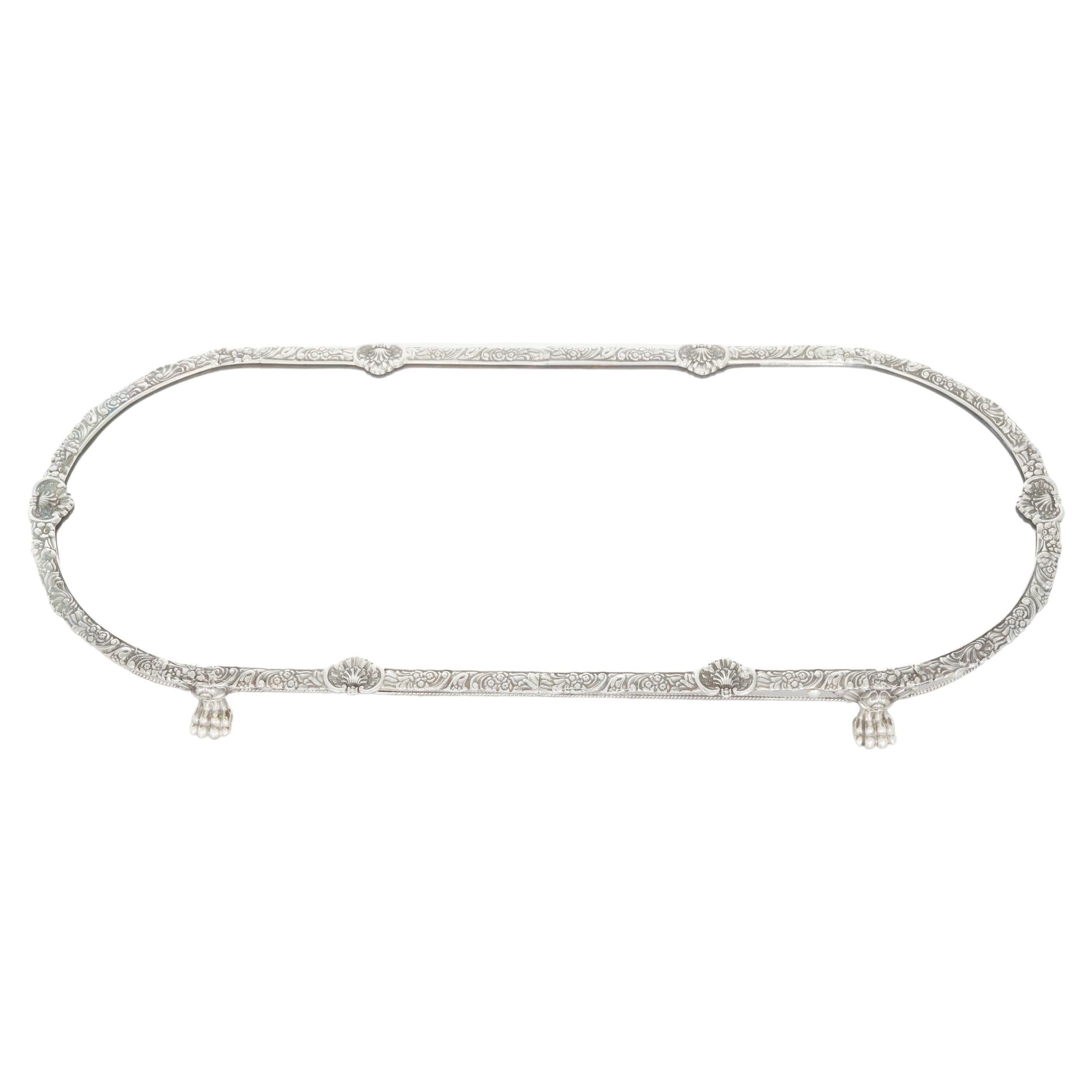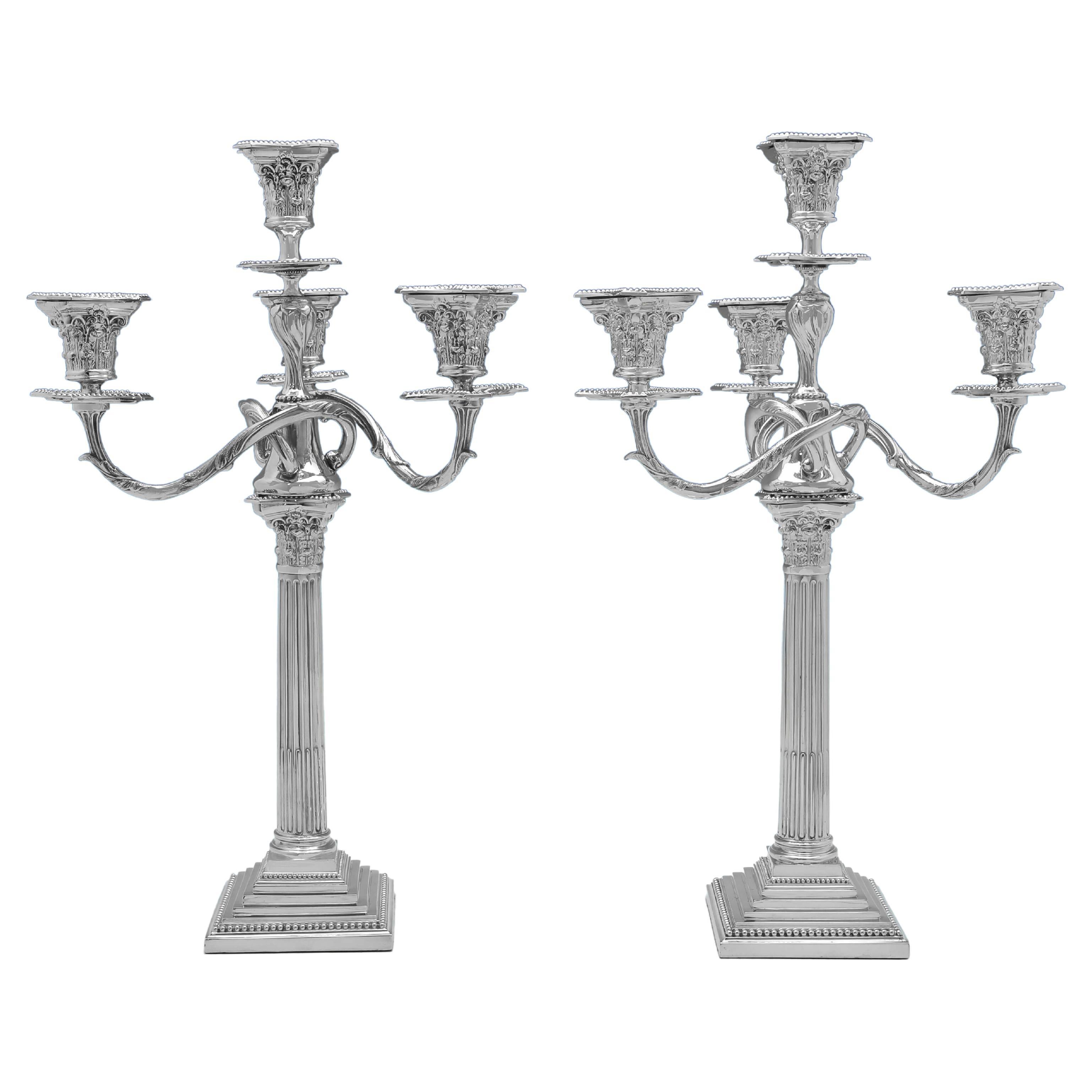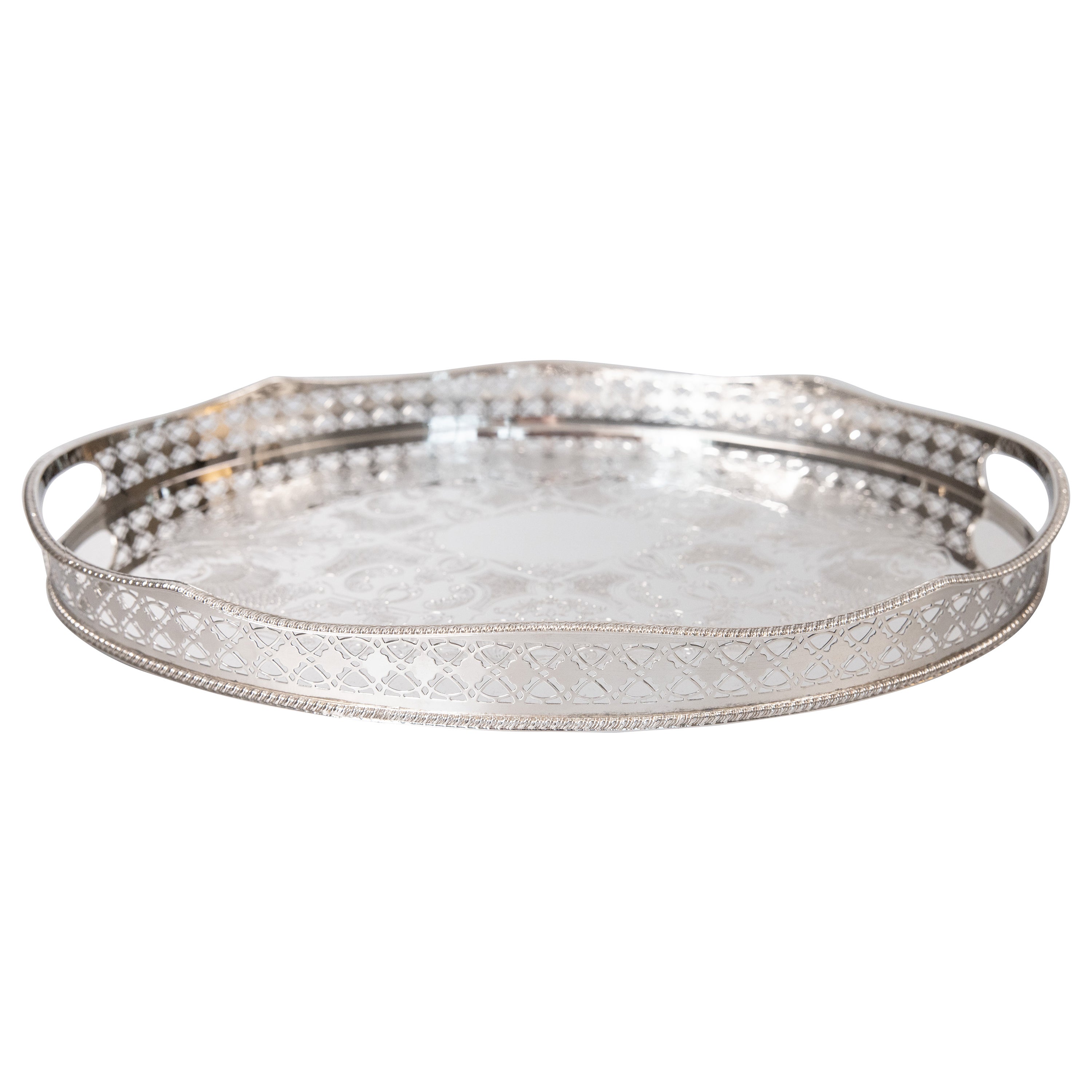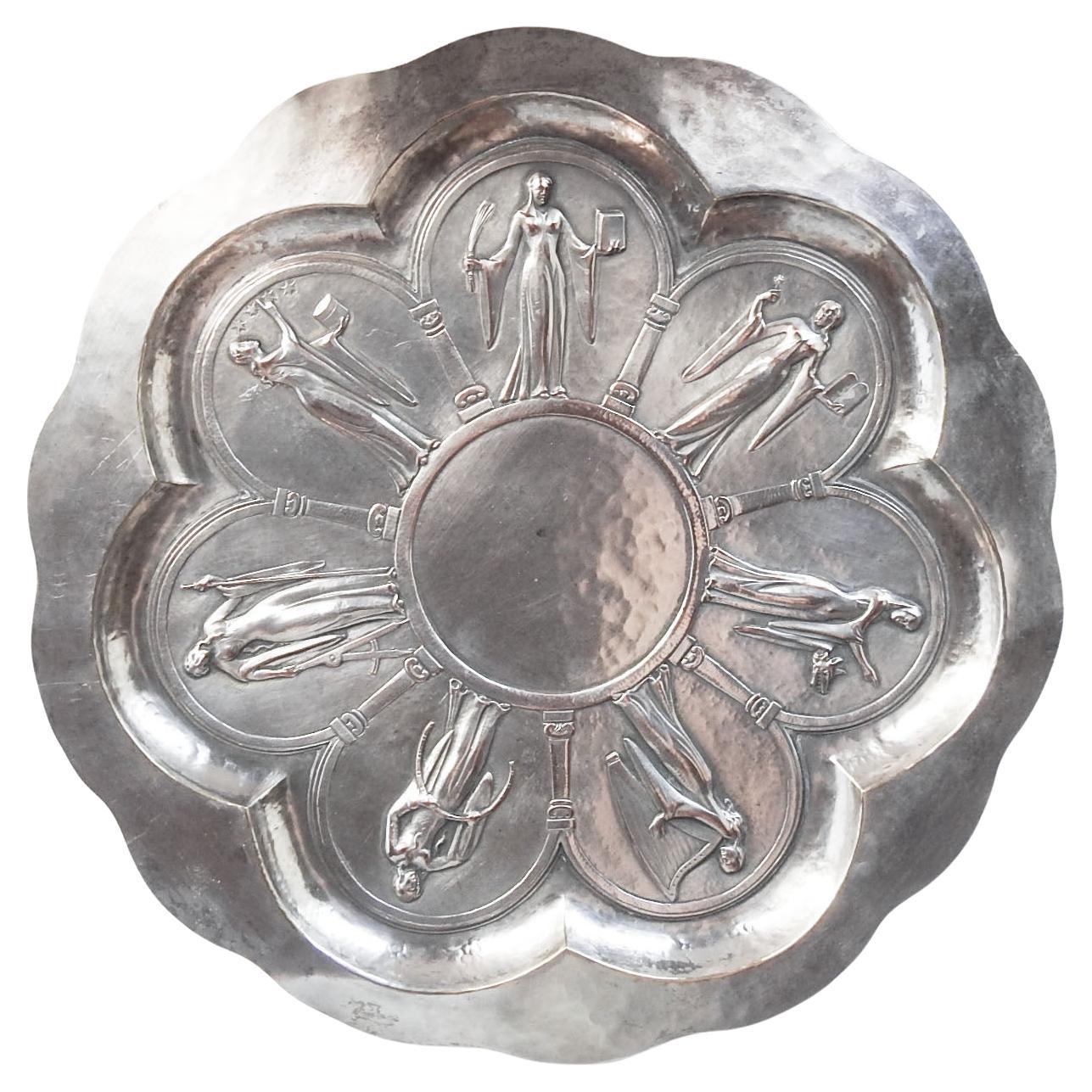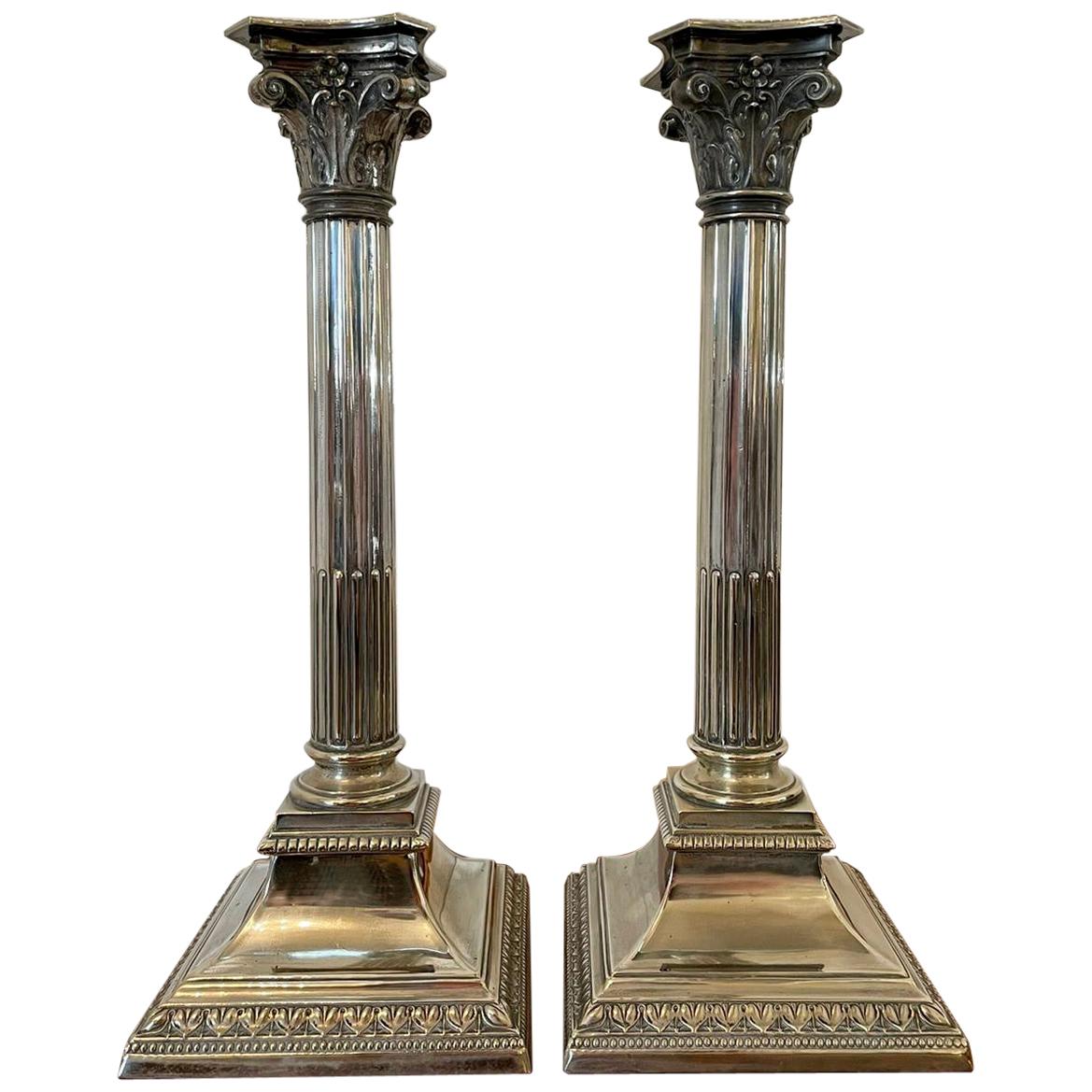Items Similar to Antique Edwardian Silver Plated Corinthian Column Table Lamp, Early 20th Century
Want more images or videos?
Request additional images or videos from the seller
1 of 10
Antique Edwardian Silver Plated Corinthian Column Table Lamp, Early 20th Century
About the Item
This is an impressive antique Edwardian silver plated Corinthian column table lamp, circa 1910 in date.
It features a classic Corinthian Capital decorated with acanthus leaves and anthemion with a thin cylindrical fluted shaft on a circular pedistal raised on a square stepped base.
Add an element of pure luxury to your home with this antique silver plated table lamp.
Condition:
In excellent working condition having been beautifully cleaned and rewired, please see photos for confirmation.
Dimensions in cm:
Height 43 x width 10 x depth 10
Dimensions in inches:
Height 16.9 x width 3.9 x depth 3.9
Corinthian capital
It has been suggested that the foliage of the Greek Corinthian capital was based on the Acanthus spinosus, that of the Roman on the Acanthus mollis. The leaves are generally carved in two "ranks" or bands, like one leafy cup set within another. One of the most beautiful Corinthian capitals is that from the Tholos of Epidaurus (400 BC); it illustrates the transition between the earlier Greek capital, as at Bassae, and the Roman version that Renaissance and modern architects inherited and refined.
In Roman architectural practice, capitals are briefly treated in their proper context among the detailing proper to each of the "Orders", in the only complete architectural textbook to have survived from classical times, the Ten Books on Architecture, by Marcus Vitruvius Pollio, better known just as Vitruvius, dedicated to the emperor Augustus. The various orders are discussed in Vitruvius' books iii and iv. Vitruvius describes Roman practice in a practical fashion. He gives some tales about the invention of each of the Orders, but he does not give a hard and fast set of canonical rules for the execution of capitals.
Two further, specifically Roman orders of architecture have their characteristic capitals, the sturdy Tuscan capitals, typically used in military buildings, similar to Greek Doric, but with fewer small moldings in its profile, and the invented Composite capitals not even mentioned by Vitruvius, which combined Ionic volutes and Corinthian acanthus capitals, in an order that was otherwise quite similar in proportions to the Corinthian, itself an order that Romans employed much more often than Greeks.
Ancient builders developed several Orders, or rules, for the design and proportion of buildings, including the columns. Doric is one of the earliest and most simple of the Classical Orders set down in ancient Greece. An Order includes the vertical column and the horizontal entablature.
Doric designs developed in the western Dorian region of Greece in about the 6th century BC. They were used in Greece until about 100 BC. Romans adapted the Greek Doric column but also developed their own simple column, which they called Tuscan.
- Dimensions:Height: 16.93 in (43 cm)Width: 3.94 in (10 cm)Depth: 3.94 in (10 cm)
- Style:Edwardian (Of the Period)
- Materials and Techniques:
- Place of Origin:
- Period:1910-1919
- Date of Manufacture:circa 1910
- Condition:
- Seller Location:London, GB
- Reference Number:
About the Seller
5.0
Platinum Seller
These expertly vetted sellers are 1stDibs' most experienced sellers and are rated highest by our customers.
Established in 1983
1stDibs seller since 2012
1,198 sales on 1stDibs
Typical response time: 1 hour
Associations
LAPADA - The Association of Arts & Antiques Dealers
- ShippingRetrieving quote...Ships From: London, United Kingdom
- Return PolicyA return for this item may be initiated within 14 days of delivery.
More From This SellerView All
- Antique WMF Silver Plated Sweets / Visiting Card / Key/ Tray Early 20th CenturyLocated in London, GBThis is a beautiful WMF Art Nouveau silver plated visiting card tray Circa 1900 in date. Depicting a female figure in a long, flowing diaphanous dress, the train forming the double sided tray, with the impressed maker's mark and stamped '169' to underside. This exquisite casket could house anything from trinkets, keys, sweets to jewellery. Whatever you choose to use this item for you are sure to do it in style. Condition: In excellent condition with no dings, dents or signs of repair. Please see photos for confirmation. Dimensions in cm: Height 22 x Width 34.5 x Depth 16.5 Dimensions in inches: Height 9 inches x Width 1 foot, 2 inches x Depth 6 inches WMF In 1853, Daniel Straub, a miller from Geislingen, joined forces with the Schweizer Brothers to form the "Metallwarenfabrik Straub & Schweizer" in Geislingen. This was the second company to be founded by Straub - previously in 1850, from the nucleus of a small repair workshop, which he had set up to work on the construction of Geislingen's famous railway incline, he had founded Maschinenfabrik Geislingen. This company was involved mainly in manufacturing mill turbines and traded throughout Europe. As early as 1862, the young company distinguished itself by winning a gold medal at the World Exhibition in London. In 1866, following the departure of the brothers Louis and Friedrich Schweizer, the company was renamed Straub & Sohn" (Straub & Son). The company showroom, built in 1868 in Berlin, gradually evolved to become the company's first retail outlet. Three years later, the company was already employing 60 workers. By 1880, the number of employees had grown to approximately 200 and the company was already producing 960 different items. 1880 saw the merger between Straub & Sohn and "Ritter & Co.", Esslingen, to form a public limited company under the name of Wurttembergische Metallwarenfabrik. At the time of the merger, Ritter & Co.'s Esslingen factory was already using the electroplating method of silver plating and had the more modern production facilities at its disposal. Straub's company, on the other hand, was the more profitable of the two. 1892 saw the development of a special technique for silver plating cutlery, whereby the silver is distributed in a way that, at the points of the cutlery most exposed to wear and tear, the coating is twice as thick as elsewhere. This process was patented and is still in use today. Known nowadays as 'Perfect Hard Silver plating' the technique remains exclusive to WMF. Under Carl Hugele the company gained international standing. At the turn of the century the factory in Geislingen employed 3,000 workers. By 1910, this number had already grown to 4,000, making WMF the largest company in Wurttemberg at this time. Sales catalogues were printed in twelve languages. Subsidiary companies in London, Warsaw and Vienna opened up export markets. Under the direction of Albert Mayer the WMF studio was influenced by the art nouveau style. The product range was modernized and considerably extended. In 1905 WMF acquired a majority holding of the Cologne company Orivit AG, which manufactured products from "Orivit", a tin alloy. As of 1925, products created by the Contemporary Decorative Products Department (NKA) made their debut on the market. This department was set up under the direction of Hugo Debach in order to establish the name of WMF amongst consumers interested in art and design. This department was responsible for producing the special "Ikora" finish, which has earned an important place in the annals of art history. The "Ikora" brand name referred to a specific method of treating the surface of the metal, by which layers of coating were applied in a partly chemical and partly heat induced process. A host of newly developed hand-finishing techniques enhanced the possibilities for adding decorative flourishes to the products. Despite being mass produced, every item looked as if it had been individually crafted. At the end of the war the company had lost its foreign assets, associated factories...Category
Antique Early 1900s German Art Nouveau Sheffield and Silverplate
MaterialsSilver Plate
- Antique Victorian Silver Plated Doric Column Table Lamp, Late 19th CLocated in London, GBThis is an impressive antique Victorian silver plated Doric column table lamp, circa 1890 in date and later converted to electricity. It f...Category
Antique 1890s English Victorian Sheffield and Silverplate
MaterialsSilver Plate
- Vintage Silver Plated Letter Rack 20th CenturyLocated in London, GBAn attractive and unusual vintage silver plated letter rack, late 20th Century in date. The letters "L E T T E R' form the dividers of this charming piece. The craftsmanship is sec...Category
1990s English Sheffield and Silverplate
MaterialsSilver Plate
- Vintage Silver Plate Wine Champagne Cooler, 20th CenturyLocated in London, GBA gorgeous Vintage silver plated wine/champagne cooler in the classic Georgian style and dating from the early 20th Century. There is no mistaking the unique quality and design of...Category
Vintage 1920s Georgian Sheffield and Silverplate
MaterialsSilver Plate
- Antique Pair Italian Silver Plated Fighting Cockerels 20th CLocated in London, GBThis is a very attractive antique pair of Italian silver plated fighting cockerels, circa 1920 in date. These beautifully sculpted and hand-chased fine textured cockerels are in rea...Category
20th Century Italian Sheffield and Silverplate
MaterialsSilver Plate
- Vintage Silver Plated Wine Coaster Pen Holder 20th CenturyLocated in London, GBA very attractive silver plated wine coaster with pierced and embossed decoration in the classic English style. A highly versatile piece which could also serve as a grandiose pen ...Category
Vintage 1980s Sheffield and Silverplate
MaterialsSilver Plate
You May Also Like
- Early 20th Century English Silver Plate / Mirror PlateauLocated in Tarry Town, NYEarly 20th century English silver plate frame surtout de table mirrored plateau. The plateau features a silver plate framed with exterior floral b...Category
Early 20th Century English Sheffield and Silverplate
MaterialsSilver
- Ellis Barker, Antique Silver Plate Candlestick, England, Early 20th CenturyBy Ellis BarkerLocated in Chatham, ONEllis Barker Silver Co. - antique single silver-plate candlestick - large size - finely chased - weighted base - menorah hallmark / stamp to the base rim ...Category
Early 20th Century British Victorian Candlesticks
MaterialsSilver Plate
- Victorian Corinthian Column Antique Silver Plated Candelabra, Made circa 1890Located in London, LondonMade circa 1890 by Spurrier & Company, this stylish pair of Antique Silver Plate Candelabra, are in the Corinthian style, each holding ...Category
Antique 1890s English Victorian Sheffield and Silverplate
MaterialsSilver Plate
- Early 20th Century English Silver Plate Footed Gallery TrayLocated in Pearland, TXA fine antique English silverplate on copper footed gallery serving or barware drinks tray with handles. Marked "EP on copper England" on reverse. This gorgeous tray is solid and hea...Category
Early 20th Century English Sheffield and Silverplate
MaterialsSilver Plate
- Early 20th Century Art Deco Silver Plate Tray 7 MusesLocated in Seguin, TXArt Deco silverplate tray featuring the 7 muses. No markings, hand hammered body silver plate with cast center decoration which is silver over copper. Each figure is 3"H, overall wea...Category
Early 20th Century Art Deco Sheffield and Silverplate
MaterialsSilver Plate
- Pair of Antique Silver Plated Corinthian CandlesticksLocated in Suffolk, GBPair of antique silver plated Corinthian candlesticks having pretty shaped removable sconces to the top and supported by attractive circular re...Category
Antique Early 1900s English Edwardian Sheffield and Silverplate
MaterialsSilver Plate
Recently Viewed
View AllMore Ways To Browse
Antique Silver Dining Table
Antique Carved Silvered
Small Silver Table
Antique Kitchen Table Dining Tables And Sets
Ancient Greek Silver
Small Glass Kitchen Table
Antique Fluted Columns
Pure Silver Set
Edwardian Dineing Table
Antique Fashion Plates
Antique Edwardian Dining Table
Circular Kitchen Table
Doric Column
Doric Columns
Edwardian Dining Set
Small Fluted Glass
1910 Kitchen Tables
Roman Antique Plates
